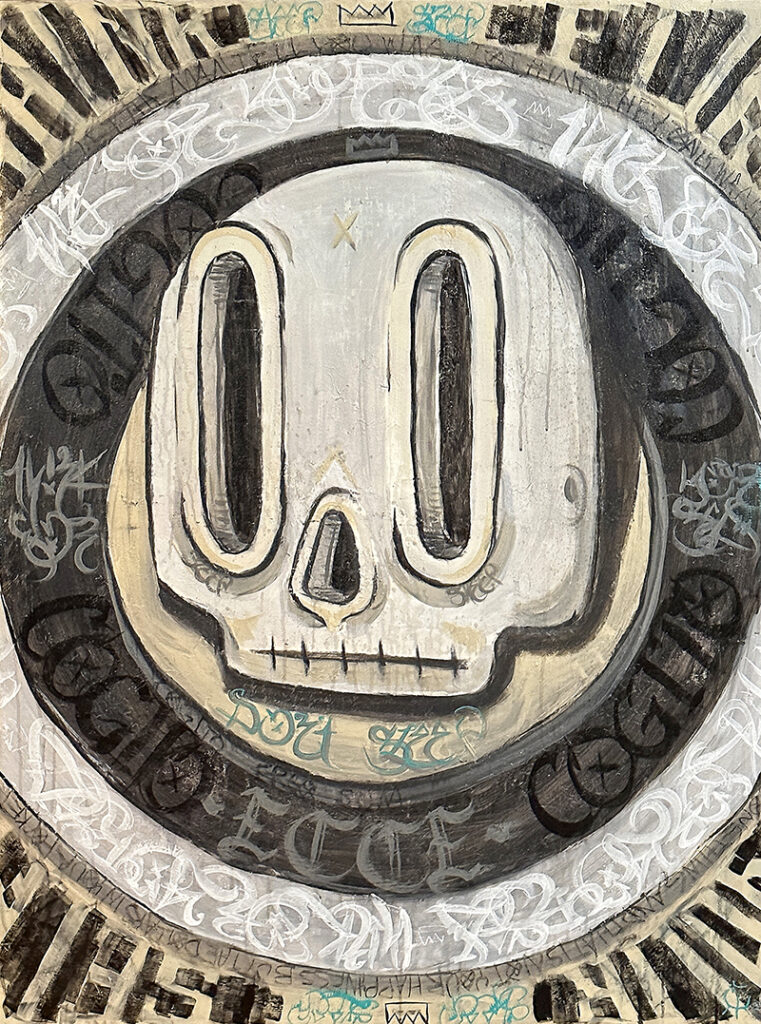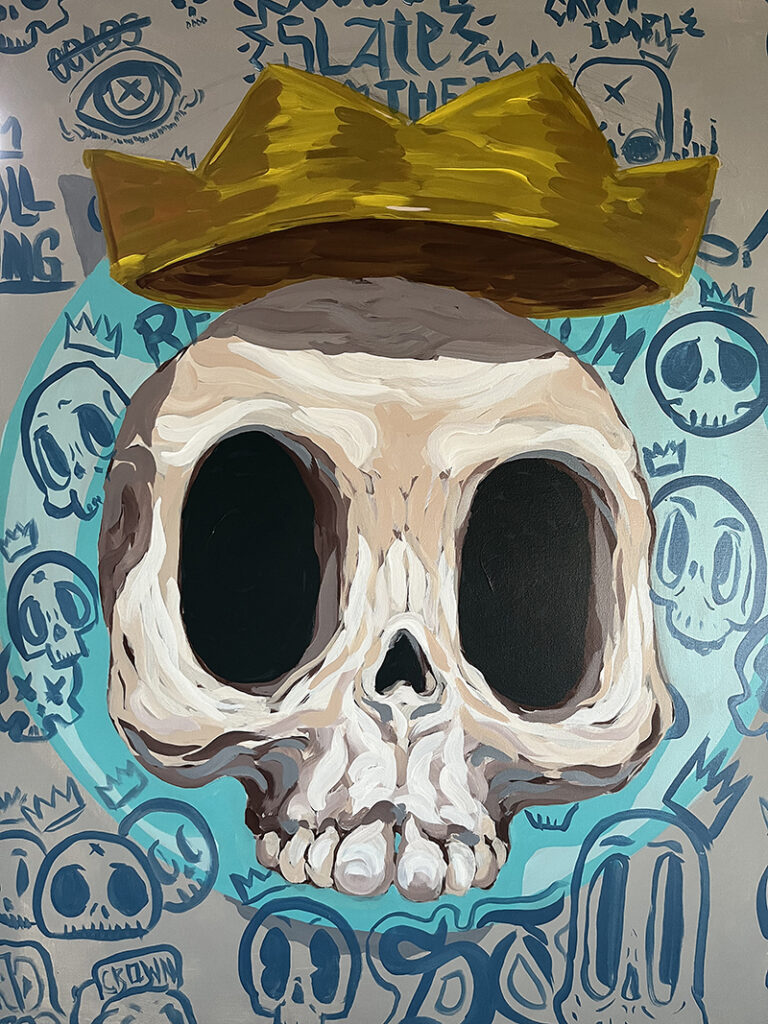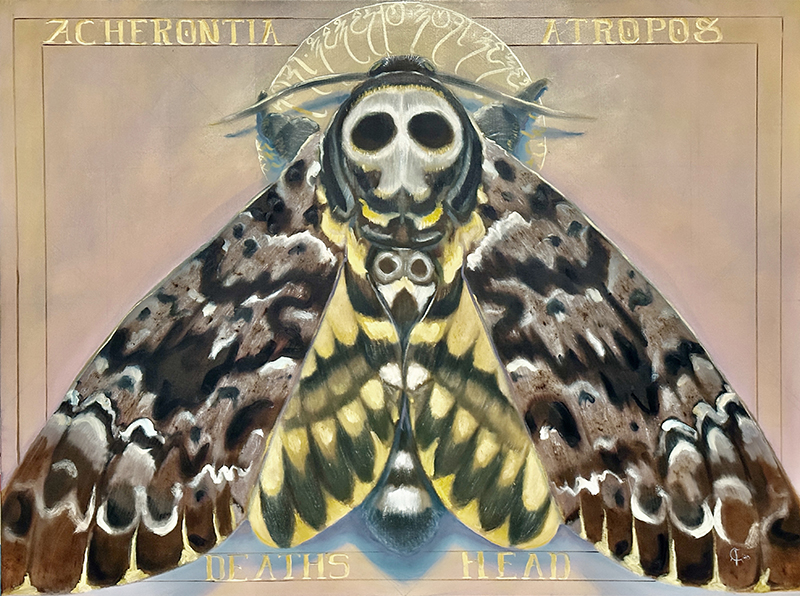Mental health advocacy is an unexpected way for a winery to brand itself, but the beginning of Slate Theory was a complete blank slate for the Jones family after leaving the West Texas oil industry for Fredericksburg.
Cody Jones’ college days studying psychology — and his intellectual nature — helped conceive the winery’s mission of destigmatizing mental illness. A portion of their profits go to the National Alliance on Mental Illness (NAMI) quarterly, in addition to donations gathered, and each bottle label somehow relates to mental health.
Slate’s red wines represent “the darker sides of mental illness,” Jones said. They include disorders, such as The Schizophrenic and The Narcoleptic. White wines are the “caregivers, the positive sides,” such as The Pharmacist and The Therapist.
Throughout his designs, he uses a crown with four points, each representing the four of seven siblings who are involved with the family business.
After years of aging, when the family was ready for a vintage to be sold, the “Sleeping King” resting in foliage — growing its bouquet — became the 2022 Muscat Blanc and Muscat Canelli blend, The Pharmacist. “I was imagining him like a sleeping King reawakened,” Jones said.
Single variety wines depict the Rorschach Test, also called “ink blot tests,” on the labels. Jones ran with the ink blots for several years before moving further into the abstract. He now incorporates moths, skulls and distorted portraits.
Jones’ abstractions are amalgamations of various manipulated media and inspirations.
Speaking to customers about mental health while Alcohol Use Disorder (AUD), formerly known as alcoholism, is deliberate irony. Almost always, Cody said, customers begin mental health conversations, rather than wine servers.
“You are more likely to start a conversation about mental health with someone who may need it, in a place they are more likely to go. Also, we recognize the scope of our stage and wish to do some good to help mitigate any possible negative effect in which we may be complicit,” Cody said.
AUD is one of the most common mental health disorders, and according to the 2022 National Survey on Drug Use and Health, 29.3 million people in the U.S. live with it.
“Mostly our conversations are with the loved ones of people who are struggling with mental health issues and providing a friendly and sympathetic ear,” Jones said.
The Therapist, made in collaboration with The Big Silence, a mental health advocacy organization, gets a lot of questions, he said. For the label, he photographed himself with ropes tied around his head and digitally replicated his eyes and hands.
“I really just try to delve into my own subconscious and then hope that it has some sort of connection to someone else somewhere.”
The Schizophrenic label is a Death’s-head Hawkmoth, often an omen of death (they were also used in the 1991 horror film “The Silence of the Lambs”). The moth’s camouflage is deceptive, like the feeling of those living with schizophrenia.
“The Rorschach looks like a moth, so it’s evolving,” he said about the label artwork maturing. “We are moving our labels more toward the symbolic, the language of the subconscious,” with such sources as Greek mythology, a favorite of Jones’s, which has a vested symbolic lexicon.
Jones scratches a Nietzsche book title, “Ecce Homo,” which means “Behold the Man,” into his artwork as an easter egg. It relates to people individually, while the motto of the winery, broadly, is “imple caput,” or “fill the head.”
“Here, at Slate Theory,” the site reads, “we understand that it is all in our heads. And we seek to fill our heads with as many pleasures, both dark and light, as our brief existence allows.”




